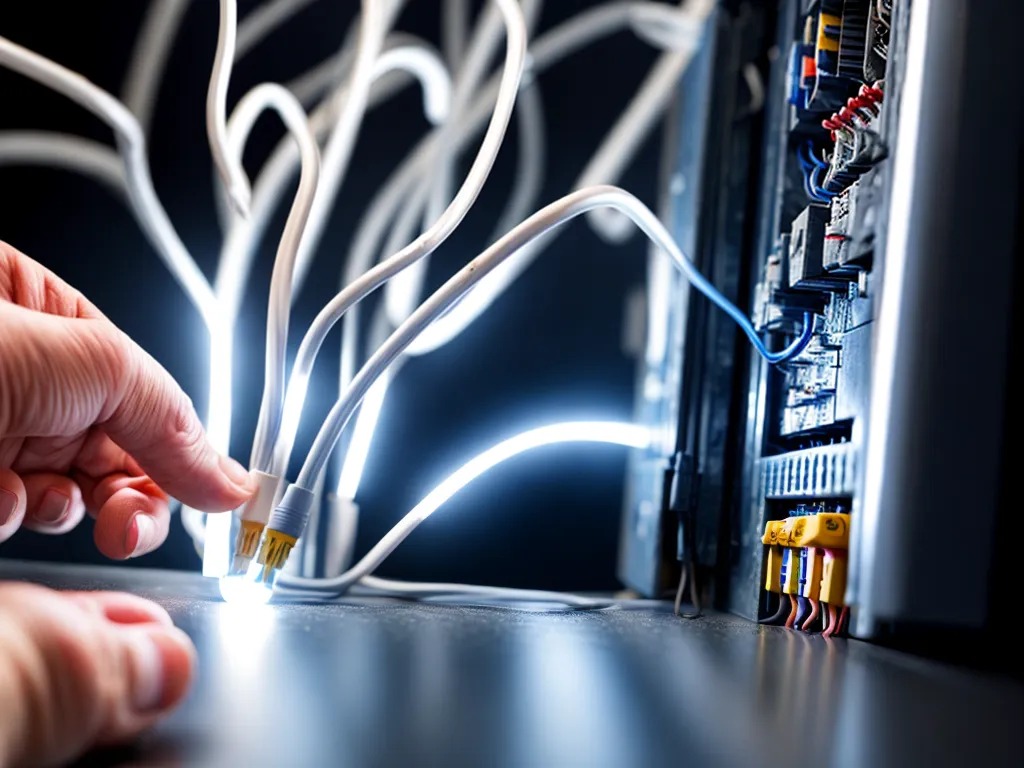
How to Troubleshoot Unexpected Electrical Surges in Your Business
Introduction
Unexpected electrical surges can cause disruptions and damage equipment in your business. As a business owner, it's important to understand what's causing these surges and how to troubleshoot them. In this article, I will provide an in-depth guide on identifying the causes of electrical surges and the steps you can take to diagnose and resolve issues.
Common Causes of Electrical Surges
There are several potential causes of unexpected electrical surges:
Faulty Electrical Equipment
Faulty wiring, old transformers, or malfunctioning electrical equipment like faulty circuit breakers can lead to power surges. If you have older electrical systems, damaged wiring, or equipment that frequently trips circuit breakers, these could be causing surges.
Lightning Strikes
If your business experiences a nearby lightning strike, the electrical surge can travel through power lines into your building. Lightning can cause sudden, large spikes in voltage.
Grid-Switching
Utility companies sometimes switch power grids to perform maintenance. The switching process can lead to fluctuations in voltage that translate into surges.
Damaged Power Lines
Nearby damaged power lines, such as downed lines after a storm, can cause uneven power delivery leading to surges.
How to Troubleshoot Electrical Surges
If you routinely experience electrical surges in your business, consider taking these troubleshooting steps:
Check Electrical Panels and Meters
Inspect the fuse box or electrical panels for any signs of damage, burnt marks, or tripped breakers, which can point to a factor causing surges. Check power meters for abnormal activity. Spikes seen on the meter during surges can indicate a problematic piece of equipment or damaged supply lines.
Contact Utility Company
Contact your electrical utility company and inquire about any recent grid maintenance, damage, or power fluctuations that could explain surges. They can also check for issues on their end.
Inspect Equipment
Thoroughly inspect wiring connections and cables within your electrical panels, outlets, and connected equipment. Look for any loose, damaged, or degraded wires and cables that need replacement. This can weed out any faulty wiring causing surges.
Isolate Equipment
Strategically switch off certain equipment to isolate any device or outlet that seems to be the culprit. Observe if surges improve by powering down specific equipment like large machines. This can zero in on faulty equipment causing the issues.
Install Surge Protectors
Consider installing good quality surge protector strips or other protection devices like surge suppressors to regulate voltages. Adding protection can help safeguard your sensitive electronics from surges.
Call an Electrician
If surges persist and you cannot determine the cause, call a licensed electrician for a thorough inspection. They can check all wiring and equipment and pinpoint any factors leading to electrical spikes.
Preventing Future Electrical Surges
To help minimize future electrical surges in your business, here are some proactive measures:
- Upgrade to surge suppressors or power conditioners to regulate voltage
- Use shielded power cables for electronics and sensitive equipment
- Ensure electrical systems and wiring are up to code and in good condition
- Install lightning rods and proper grounding if lightning strikes are an issue
- Consider investing in power backup systems like uninterrupted power supplies
- Replace old or faulty electrical equipment and wiring
Taking preventative measures can reduce the chances of disruptive electrical surges in the future. But being prepared to troubleshoot and investigate the causes can help minimize damage when they do occur.
When to Call an Electrician
If you are unable to determine the root cause of electrical surges or resolve them through troubleshooting, it's best to call a licensed electrician. Consult an electrician if:
- Surges are frequent or excessive
- You notice any damaged equipment or wiring
- Appliances are frequently tripping or blowing fuses
- You observe flickering lights, buzzing, or burning smells
A professional can conduct thorough diagnostic tests, assess your entire electrical system, and tackle any factors you may have missed. Though inspecting and troubleshooting issues yourself can resolve many electrical spikes, be sure to call in an expert if the problem persists.
Conclusion
Dealing with unexpected electrical surges in your business can be disruptive and pose risks to equipment. By learning where surges come from and taking proactive troubleshooting steps, you'll be better equipped to tackle them safely. Identify faulty wiring and equipment causing issues. Implement preventative measures like surge protectors. And don't hesitate to turn to electricians when needed. Addressing electrical surges properly will minimize any disruptions to your business.